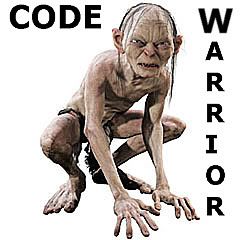happened today....http://www.reuters.com/article/idUSN0624451020100507
"NEW YORK, May 6 (Reuters) - A spine-chilling slide of nearly 1,000 points in the Dow Jones Industrial Average, its biggest intraday points drop ever, led to heightened calls for a crackdown on computer-driven high-frequency trading."
The use of mathematical algoritms, formulae, and prediction computations, are rampant in the world of finance. A prime example is the "formula that almost brought down Wall Street" in Wired magazine, about a Mr. Li and his Gaussian function cupola
http://www.wired.com/techbiz/it/magazine/17-03/wp_quant?currentPage=all
"
A year ago, it was hardly unthinkable that a math wizard like David X. Li might someday earn a Nobel Prize. After all, financial economists—even Wall Street quants—have received the Nobel in economics before, and Li's work on measuring risk has had more impact, more quickly, than previous Nobel Prize-winning contributions to the field. Today, though, as dazed bankers, politicians, regulators, and investors survey the wreckage of the biggest financial meltdown since the Great Depression, Li is probably thankful he still has a job in finance at all. Not that his achievement should be dismissed. He took a notoriously tough nut—determining correlation, or how seemingly disparate events are related—and cracked it wide open with a simple and elegant mathematical formula, one that would become ubiquitous in finance worldwide.
For five years, Li's formula, known as a Gaussian copula function, looked like an unambiguously positive breakthrough, a piece of financial technology that allowed hugely complex risks to be modeled with more ease and accuracy than ever before. With his brilliant spark of mathematical legerdemain, Li made it possible for traders to sell vast quantities of new securities, expanding financial markets to unimaginable levels.
His method was adopted by everybody from bond investors and Wall Street banks to ratings agencies and regulators. And it became so deeply entrenched—and was making people so much money—that warnings about its limitations were largely ignored.
The point here is the hubris that these assholes have, in thinking they can be the modern Delphi, the modern Nostradamus, not via scrying with a crystal ball, but by plugging in numbers in their computer, angers me, and the vindication is seeing the ruination.


No comments:
Post a Comment